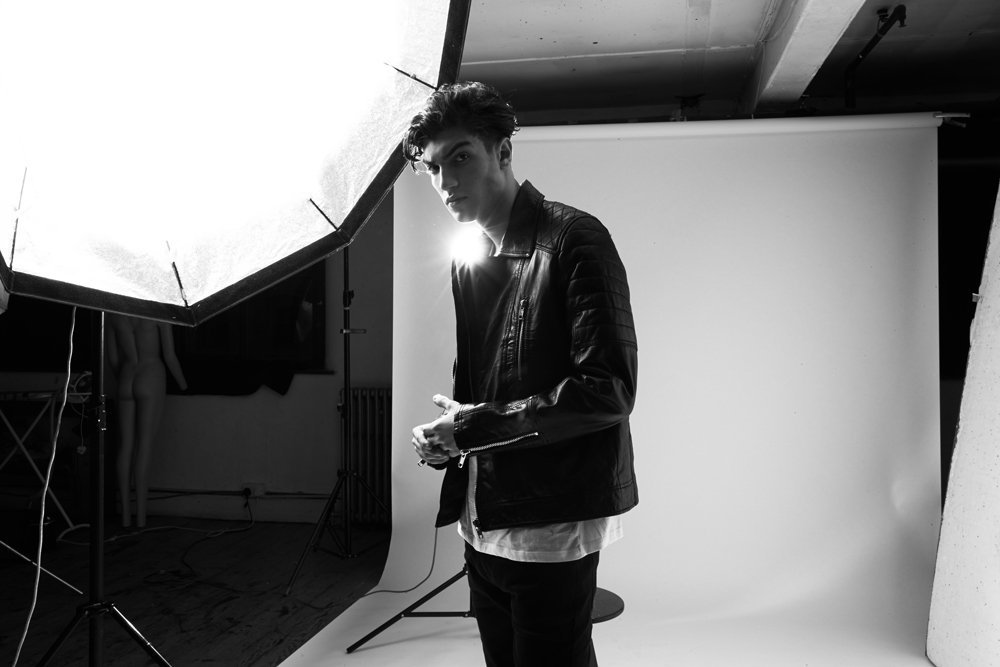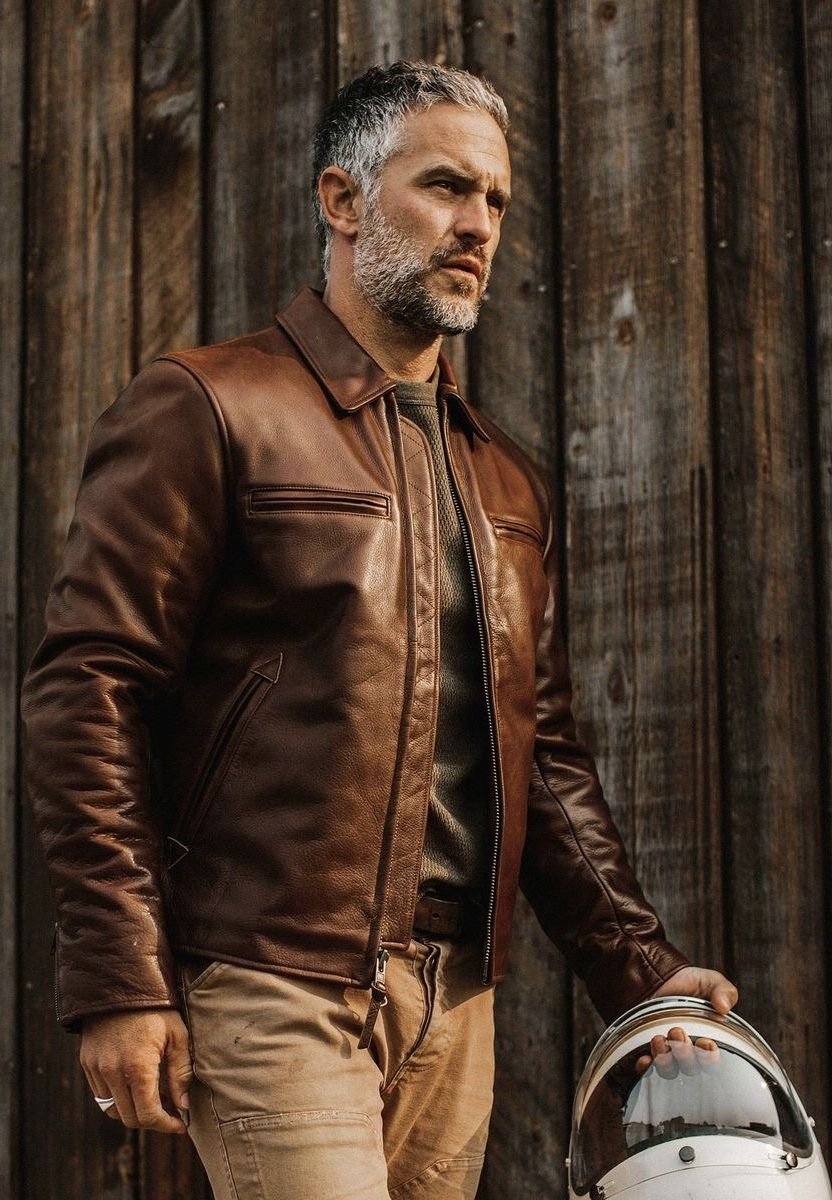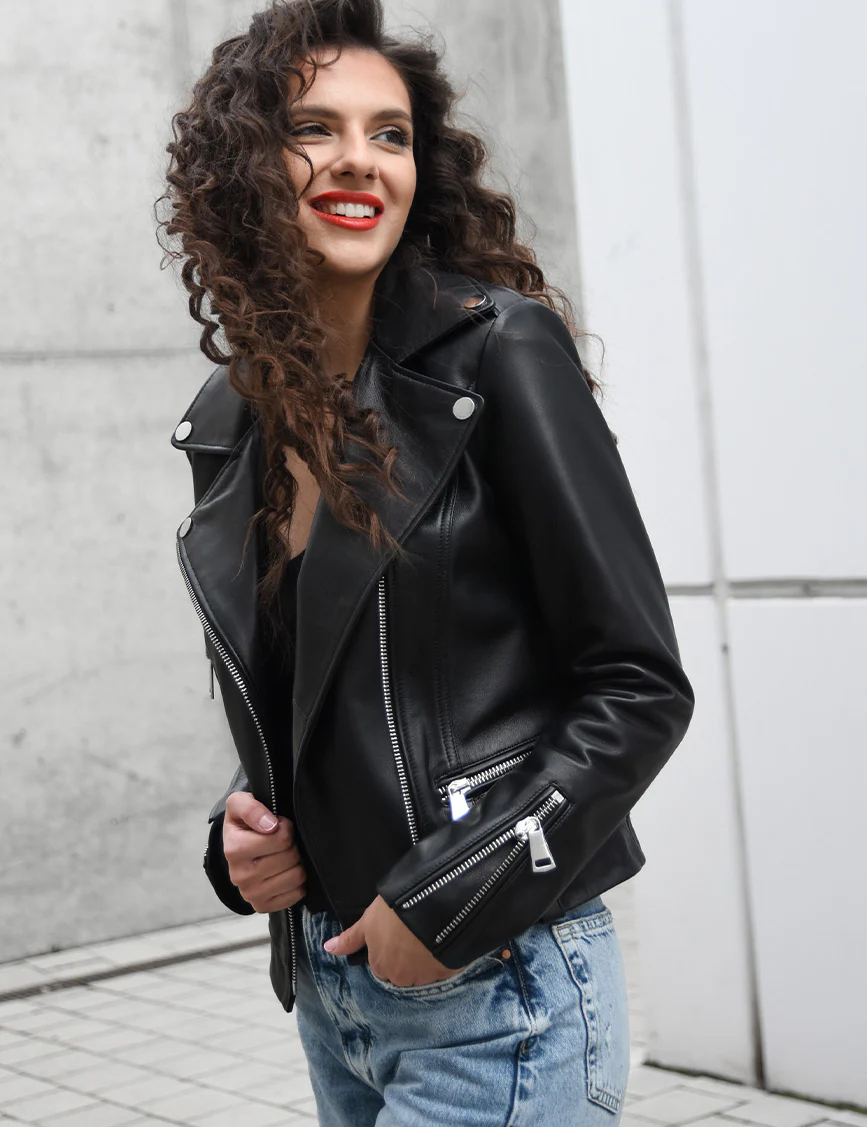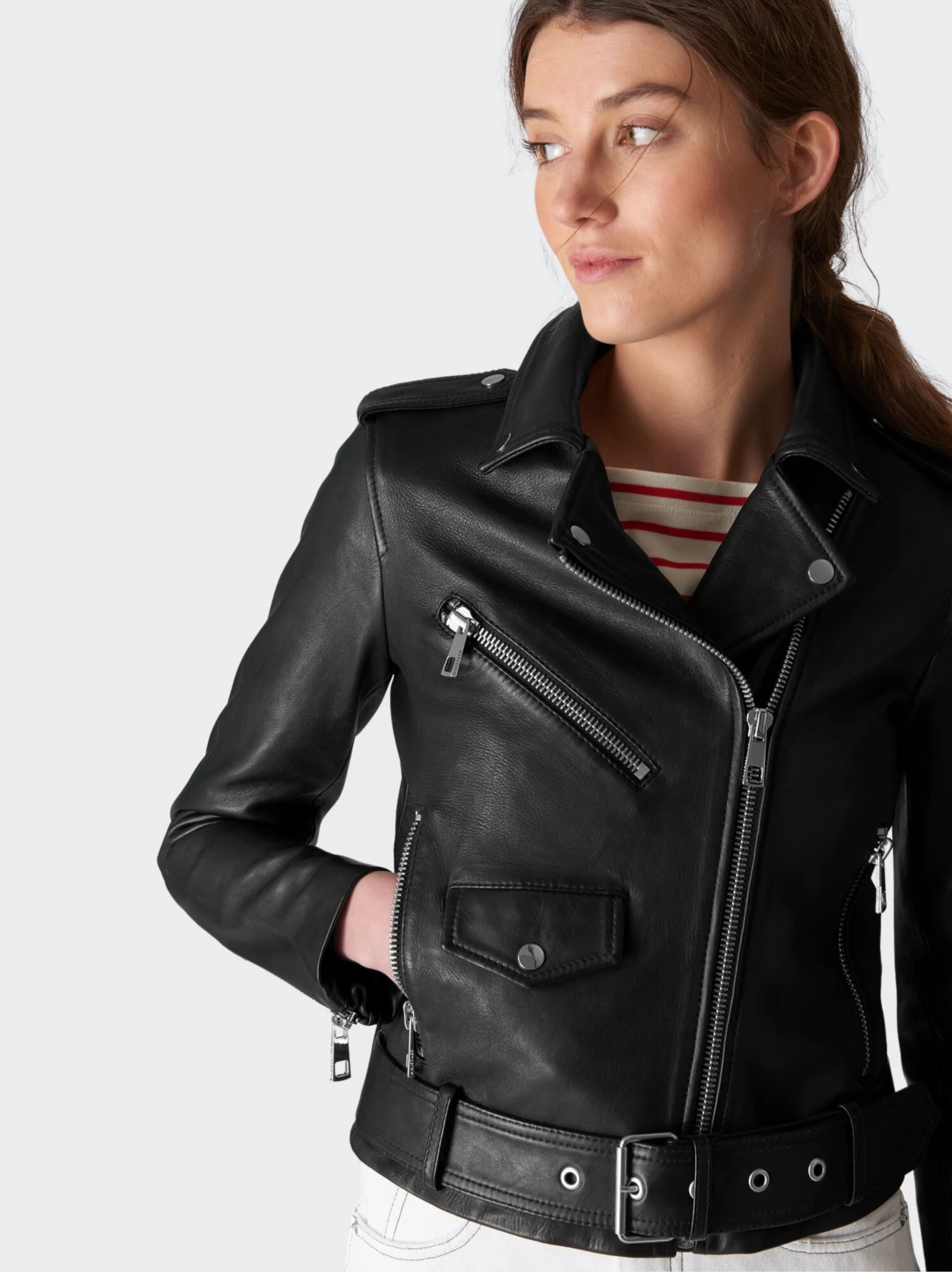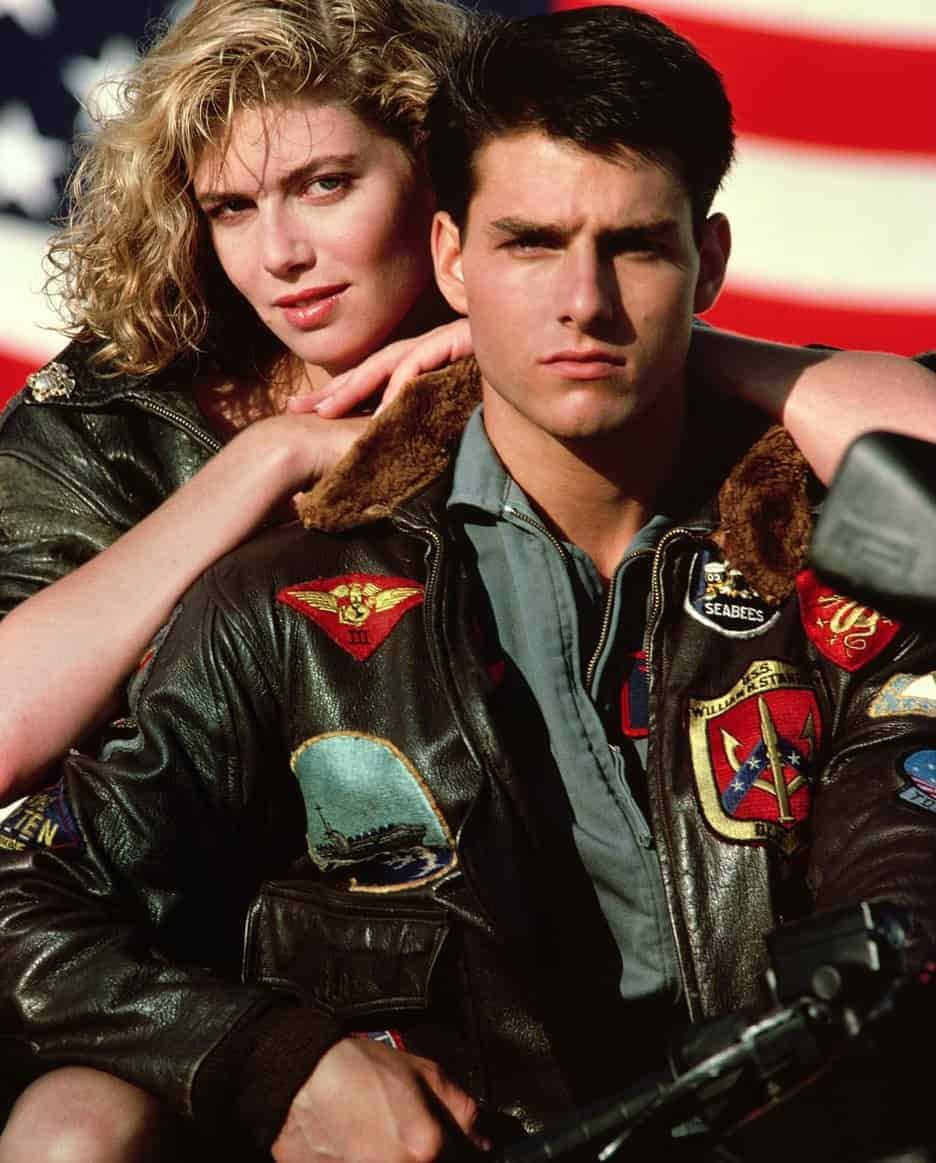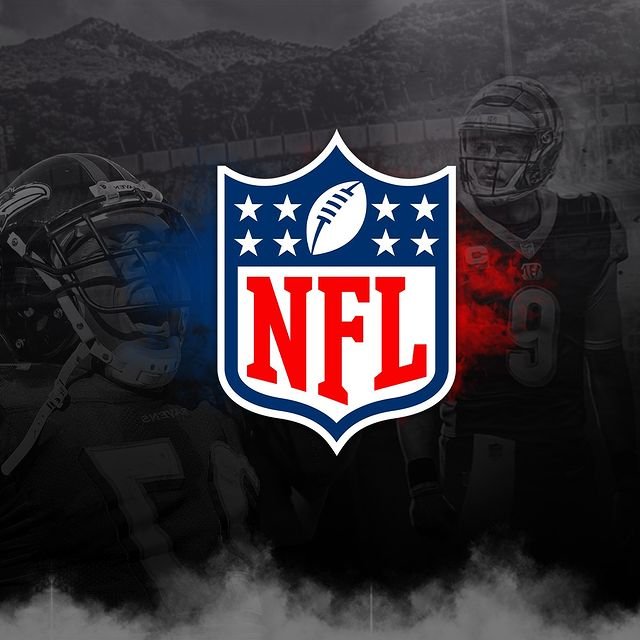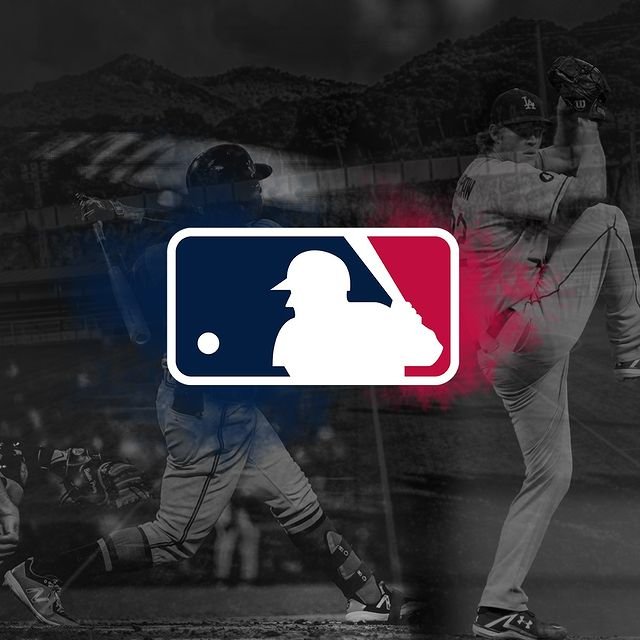
FROM THE JOURNAL
Wednesday,
January 4, 2023
Learn About Leather
Everything Need To Know About Leather
Leather is one of the most popular materials for clothing, furniture, and accessories, but do you really know all there is to know about this iconic material? From its history to the many different types of leather available today, this guide covers everything you need to know about leather.

What is Leather?
When animal skins and hides are chemically treated, or tanned, to prevent decay, leather is created. Leather is a sturdy, flexible, and long-lasting material. It is constructed from animal skins and hides that have undergone chemical treatment in order to preserve them and render them appropriate for use as clothing, leather jackets, handbags, shoes, furniture, and sporting goods. However, leather also is made from the hides of cattle cow, goats and sheep, and pigs. Cattle and calf skins account for the majority of leather manufactured and sold in the United States.

A Bit Through Back to History of Leather:
Leather is a durable and flexible material created through the tanning of animal skin, often cattle hide. The word leather also refers to anything made of this material.
The use of leather has been prevalent throughout human history, with early evidence dating back to the Paleolithic era. The earliest known use for leather is from about 10,000 BC in what is now modern-day Iraq. It was used for clothing, shoes, and bags before it was later used for other purposes such as armor and shields. In ancient civilizations, tanned hides were often used to create parchment or paper.

The Centuries Before This Time, Storyline of Leather:
Leather was popularized as a fabric in 18th-century England when it became widely available due to trade with India and North America. At this time, it became fashionable for members of the upper classes to wear clothes made out of animal skins such as lamb or calfskin. In addition, there are records that document the wearing of leather garments by people in ancient Mesopotamia around 3400-3000 BC.

How is Leather Treated Mostly Today:
Leather is also the name of a material made from threshed animal hides that have been processed into leather through tanning. Today, it is most often produced as a fashion accessory, or as an item for use in arts and crafts. Many non-leather alternatives have evolved to serve the same purpose.
Tanning (or dressing) uses tannin compounds and other agents that transform skins into the leather of varying qualities for use in clothing and other applications. Tanning is an important step in the production of leather from raw hides. In tanning, the skins are soaked in a solution of tannins (tanning agents) and water which changes the skins into the leather with more flexibility and strength. The leather made from such skins is less porous than suede, has a silky sheen, does not discolor or stain as readily as suede does, will stay cleaner for longer periods of time, and is not as flexible as suede. Sheepskin can also be dyed with a wider variety of colors than suede.
Treatment of Leather:
Leather is a popular material for use in fashion and furniture. It is also used in the manufacturing of some automobiles and aircraft. Leather can be made from the skin of cattle, sheep, deer or cow. The process starts with the animal being raised to maturity and then killed by either electrocution, shooting or a captive bolt pistol. The skin is then removed from the carcass and tanned.
The final stage involves cutting up the skin into desired shapes and sizes like sheets or rolls and then finishing it with waxes or oils to give it the desired look like smoothness or glossiness.
Leather Quality
If you’re in the market for a leather jacket, it’s important to be familiar with the various types of leather used in their construction. Full-grain, top-grain, genuine, split, bonded, and faux leather are the most common types. But how do you know which one is right for you? To help you make an informed decision, we’ve compiled a breakdown of each type of leather and its associated quality.

Leather Grading:
Leather grading is a process used to assess the quality and condition of the leather. It involves examining the material’s grain, texture, colour, and other factors and assigning it a grade based on those criteria. Grades are used to determine the value and suitability of the leather for a particular use. For example, higher grades of leather may be more expensive and used in luxury upholstery, while lower grades may be used in more affordable bags and shoes. Grades can also be used to differentiate between different types of leather, such as full-grain, top-grain, corrected grain split-grain and bonded leather.
1. Full-Grain Leather:
Full grain leather is the highest quality leather available, renowned for its strength, durability, and timeless beauty. Made from the outermost layer of the hide, it has not been sanded, buffed, or altered in any way, allowing it to retain its natural look and feel that only improves with age. Full–grain leather is resistant to wear and tear and develops a beautiful patina over time that adds to its charm. Its natural imperfections and scars make it one of the most sought–after materials for a variety of products, from wallets and handbags to shoes and furniture.
Full–grain leather is more expensive than other types of leather, but its superior quality and long–lasting nature make it a worthwhile investment.
2. Top-Grain Leather:
Top–grain leather is a type of full–grain leather, but with a slight difference. It is made from the top layer of the hide and is sanded and buffed to remove any imperfections. It is then treated to make it more durable and resistant to moisture, stains, and damage. The result is luxurious, high-quality leather that is softer and more supple than full-grain leather, but still incredibly strong and durable.
Top-grain leather is great for everyday use, as it is extremely durable and resistant to wear and tear. It is also easy to clean and maintain, and if properly cared for, can last a lifetime. It is important to note, however, that top-grain leather can be susceptible to drying out and cracking if not properly conditioned and cared for.
Because top-grain leather is of the highest quality, it is also
3. Corrected-Grain:
Corrected–grain leather is usually more affordable than full–grain leather, but it is also not as durable. It is best suited for items that are not subject to a lot of wear and tear, such as furniture, clothing, and shoes. It is also not waterproof, so it is not ideal for items that will be exposed to moisture.
To maintain the appearance of corrected–grain leather, it is important to regularly clean and condition it with a leather cleaner and conditioner. This will help to protect the leather from dirt and moisture and keep it looking its best. It is also important to avoid exposing the leather to extreme
4. Split Leather:
Split leather is usually given a finish to make it look and feel like top–grain leather. This finish can include a variety of treatments, such as embossing, buffing, and dyeing. The finish may also include a coating to make it more resistant to water or staining.
Split leather is a great choice for those looking for leather goods on a budget. It is more affordable than top–grain leather and can be used to make a variety of products, such as shoes, bags, and furniture. Split leather is also very durable and long lasting, making it a great choice for those looking for a leather item that will last.
One downside to split leather is that it is not as breathable as top-grain leather, which can make it
5. Bonded Leather:
Bonded leather is a material made from recycled leather and other materials that are bonded together to create a durable and stylish material. It has become a popular choice for upholstery, furniture, accessories, and clothing due to its cost–effectiveness and durability.
Bonded leather is also much easier to care for than natural leather, as it does not require the same amount of maintenance. It can usually be wiped down with a damp cloth and is generally resistant to stains. However, it is important to note that bonded leather does not develop the same patina as natural leather, making it less desirable for those looking for a more vintage look.
Leather Types
When it comes to buying a leather jacket, one of the most important decisions to make is choosing the right type of leather. Leather is durable and flexible which makes it perfect for a variety of uses. It can be soft like suede or hard as an old boot. Leather also has a beautiful appearance that can be dressed up or dressed down depending on the occasion. Different Types of Leather, Leather is made from the skins of animals like cows, horses, sheep, and goats. The thickness of the material depends on whether it is domestic or exotic animal skin. After tanning, the leather may be treated with oils to give it a more distinctive appearance and leather may be dyed in various colors including black and white. Watch out for the types of leather you purchase to avoid wearing clothing made from endangered animals! OR Make sure to read the labels carefully and select full-grain leather to get the most out of your leather jacket.
1. Cowhide Leather
Cowhide leather is one of the most popular leather types used in the fashion and leather goods industry. It is made from the hide of a cow, which is tanned and processed into leather. Cowhide leather is highly durable and can be used for a variety of products, from shoes and clothing to furniture and accessories. Cowhide leather is also relatively affordable and easy to care for, making it ideal for those on a budget. It is available in a variety of colors and finishes and can be embossed with textured designs.
Thinner, lower quality hides that have some kind of “corrective” coating can be used in higher priced fashion jackets. In those cases you’re often just paying for the brand name rather than investing in the jacket itself.

2. Calfskin Leather
Calfskin leather is a great choice for those who want a lightweight yet durable leather jacket. It offers a finer grain than lambskin and is less prone to stretching or wearing down over time. It also has a luxurious feel and can develop a beautiful patina with wear. Plus, due to its lighter weight, it won’t take nearly as long to break in a calfskin jacket as it would with a heavier hide such as a cowhide or horsehide.
For those looking for an exceptionally high-quality leather jacket, consider choosing a manufacturer that specializes in leather and uses thicker, high-grade hides that show off the natural grain of the leather. These jackets will not only look stunning, but they’ll stand the test of time and be a piece you can cherish for years to come.

3. Lambskin Leather
Lambskin leather is one of the most sought–after materials for fashion jackets. It‘s extremely soft and supple, with a fine grain that makes it a pleasure to wear, and no break–in time is required. Lambskin is also relatively durable, making it a great choice for both fashion and everyday wear. Additionally, the leather’s elasticity makes it difficult to develop the rolls and wrinkles that give a jacket a lived-in look, but it still looks great when cared for properly. For those looking for a luxurious and comfortable leather jacket, lambskin is an ideal choice.

4. Horsehide Leather
Horsehide leather is a luxurious and highly sought–after material for leather jackets and other apparel. It is distinguished by its thick texture, fine grain, and stiffness that offers a unique combination of flexibility and durability. Horsehide is rare than cowhide, making it more expensive and difficult to find, but its strength and longevity make it well worth the investment. Breaking in a horsehide jacket can take some time, but with the proper care and attention, it will last for decades and become even more beautiful with age.
Why Leather Feel Different?
Leather is a natural material that has been used for centuries for its durability, style, and comfort. Leather can be made from the hides of animals such as cattle, bison, and horses.
The look and feel of leather is a result of the tanning process. The first step in tanning is called liming which removes hair and makes the skin easier to work with. The second step in tanning is called pickling which removes all moisture from the hide so it won’t rot during storage or transport. The third step in tanning is called curing which stabilizes the collagen fibers in the hide so they don’t shrink or warp when it dries out. After curing comes dyeing where hides are soaked in various liquids to give them their desired coloration before being dried out to reach maximum strength and flexibility. Finally, finishing involves treating the leather with oils or waxes to give it a glossy shine or water resistance depending on what will be used.
Leather Industry and Material Choices:
Leather is also a very versatile material with many uses. It can be used as an upholstery for furniture or car seats, in clothing, as well as in the manufacturing of leather goods like Leather Biker Jackets, Leather Wallets or Leather Handbags and .
The leather industry has been around for centuries and it continues to grow every year. The total global production of leather was estimated at over 100 million tons in 2011. However, it is difficult to pinpoint exact figures as the industry is not highly regulated.
The world’s largest leather producer by volume is China, followed by Brazil in second place. The statistics for the United States are difficult to determine as there are no accurate figures for the amount of leather produced domestically and imported into the country. Estimated production numbers for the US include 6 million tons of hides (2011), 1 million tons of bovine hides (2006), and 11 million pounds of goat and sheep hides (2013), with a combined value of over $1.6 billion dollars in 2013.
Pain Point About Leather:
Leather is also a difficult material to recycle, though some companies have taken steps to further reduce the amount of leather waste produced by redesigning and reworking old pieces into new goods.
The manufacture of leather has become more sustainable in recent years as there are many different processes that can be used to produce it. These methods include; tanning with vegetable tannins like oak bark.
Leather Quick Facts
- Leather is a natural and renewable material that has been used for centuries as a protective covering and durable fabric.
- Leather is a breathable material, meaning it can regulate the temperature of the body and keep the wearer comfortable in any climate.
- Leather is one of the oldest and most versatile materials used in fashion and home décor around the world for more than 5,000 years.
- Leather is strong, durable, and can last for years with proper care and maintenance.
- Leather is available in a variety of colors, textures, and styles to suit any taste.
- The tanning process used to create leather can be eco–friendly, producing a biodegradable material that will not harm the environment.
- Leather is water–resistant and can be treated to be fire–resistant.
- Leather is easy to clean and maintain and can be restored to its original look with the proper care and maintenance.
- Leather is an excellent choice for upholstery, bags, and clothing, as it is both stylish and practical.
- Leather is made from the hides of animals, mostly cattle, and is treated to make it durable and resistant to water, fire, and wear.
Basic FAQs About Leather
- Flexibility.
- The Smell.
- The Grain Pattern.
NO
The hides and skins of cattle, sheep, goats and pigs are a by-product of the food industry, which if not used to make leather will go to landfill.
From skin cells that produce collagen, the lab produces leather in just two weeks. It is erroneously stated that “no animals are harmed” seeing as skin cells from a living animal’s biopsy are used to develop leather in a lab. Thus, it is possible to produce leather or hide from cows, crocodiles, and ostriches.
Foxes get a 20% possibility to spawn with leather, and when killed, they have an 8.5% chance of dropping it (guaranteed drop in Bedrock Edition). As an alternative, you can make it drop the leather by exchanging food instead of killing it. Fishing has a 0.5%–1.2% chance of producing.
The fabric contains leather of some sort or is made from real animal skin and is pure leather. Although it is not close to the quality of top-grain or full-grain leather, it is still made from genuine animal skin.
To prevent spoilage while in transit from the supplier to the tannery, the hide or skin is packed in salt. When the hides are packed in salt, the moisture is drawn out, curing the hides and preventing them from rotting.
The finest leather is full-grain leather. The most common kind of leather is this one. Its natural marks and flaws have not been polished, sanded, or buff out of the surface. Because the grain has not been removed, the fibers are stable and strong.
Real leather is fundamentally an animal hide. Almost any animal’s hide, including those from pigs, sheep, goats, and crocodiles, can be used to make leather. But the hide from a cow is the one that is most frequently used.
As it stands, however, using leather that is produced as a by product of the meat industry and tanned using vegetables is a fairly eco-friendly choice, particularly if you use it frequently.
Leather is Even though leather is a natural material, it can take up to 50 years to decompose. This is simply a result of how the leather is handled during production.
Materials made of collagen are very susceptible to the deterioration and oxidation that they primarily experience and go through. The most frequent causes of leather disintegration are specifically acid hydrolysis and photooxidation.
Real leather cannot be completely waterproof because it is porous. Assume leather as water-resistant instead. While it’s okay to quickly step into the rain to get to your car while wearing your shoes or handbag, this isn’t the same as submerging leather
Although leather has some inherent water resistance, it doesn’t mix well with water. This is acceptable if it gets wet in small amounts (like light rain), but natural animal leather is porous, so it will never be completely waterproof.

